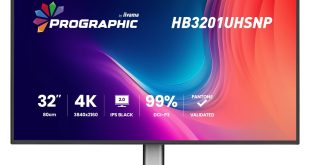We work with some of the world's leading technology companies, especially when it comes to graphics cards. During a recent video shoot with one of the biggest, we were discussing that wonderful thing called ‘the future' and the discussion moved to image quality, preparedness and the cost of glass. The main focus of discussion was: Why is it taking so long for the price to fall?
KitGuru has long suspected collusion among the monitor vendors – especially at the high end. We covered this subject in some detail 18 months ago and very little has changed since. At the time, we commented that it was surprising that 30″ screens from the major brands, capable or running 2560×1600 resolution, were still £1,200. In any other part of the world of electronics, that price would have plummeted. Indeed, it has plummeted for every other kind of screen. So what would you guess today's price for that screen would be? You know, 18 months later. Click here for a shock.
So how does the pricing break down for each section of the monitor market?
If we look at the regular desktop screens, with estate up to 27″ and resolutions around 1920×1080, then stores like Aria have the Benq G2750 for just £166 inc vat. That's a ‘cost per inch' of just over £6.
Once you reach the 30″ screens, then you will typically be paying more than £1,000 – even if some stores manage to negotiate a limited volume of stock at a lower price. If we're generous and calculate 30 inches of display at £900, then we have £30 an inch. That's a 5-fold increase because we moved up 3 inches.
As we approach 4k TV resolutions, you need to leave all of the old metrics behind. Just because you could purchase 4 of the Benq G2750 screens from Aria for just over £600 and run then fine with a Sapphire Flex card, don't think we're going to be picking up a single 4k screen for sensible money.
At the time of writing, the typical price of an established 4k monitor, like the Sony SRM-L560, is a cool £56,000.
To help us with the maths of ‘cost per inch', the screen is conveniently 56 inches across the diagonal.
When you look at the actual number of pixels present in ‘Quad HD', for example by comparing the horizontal and vertical resolutions of a 30″ screen (2560×1600) to those found in the Sony (3840×2160), then you're talking 1.5x across and 1.35x up. With such a small increase, can we really be expected to fork out 56x the price?
Pressure on ‘Quad HD' will come from a number of sources, especially following the news that the South Korean government will be pumping an additional $55 million into LG. Apparently the government grant was made available, Samsung and LG bid, with LG winning.
Over at Computex 2012, we saw a much more affordable Quad HD product on display from Viewsonic. The £56,000 Sony monitor operates a 12-bit colour engine with a load of professional features that normal folk won't need. Viewsonic has dropped the glass size to 31.5 inches and it uses 10-bit colour (which is still vastly superior to the majority of LEDs in the world today).

KitGuru says: We're expecting products like the Viewsonic 31.5″ screen to be in stores under £20,000 (£630 an inch) before the end of this year. If things go well, then you might see Quad HD monitors in store for less than £5,000 at some point in 2013 (£160 an inch).
Comment below or in the KitGuru forums.
 KitGuru KitGuru.net – Tech News | Hardware News | Hardware Reviews | IOS | Mobile | Gaming | Graphics Cards
KitGuru KitGuru.net – Tech News | Hardware News | Hardware Reviews | IOS | Mobile | Gaming | Graphics Cards


